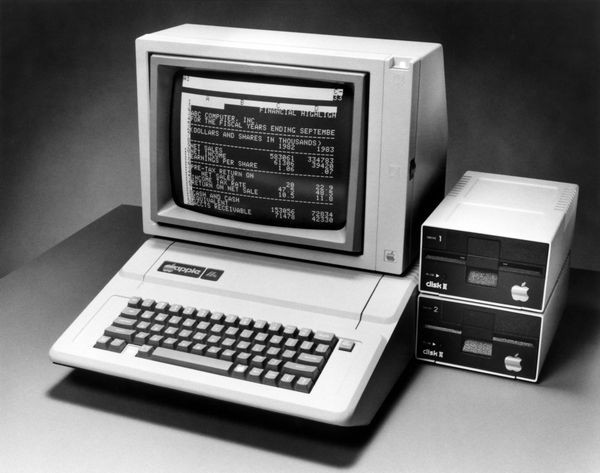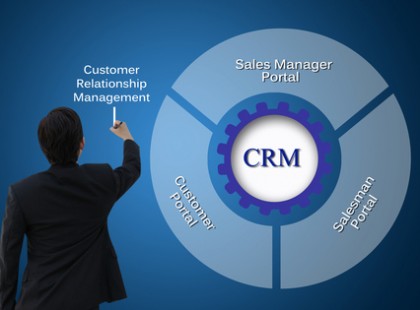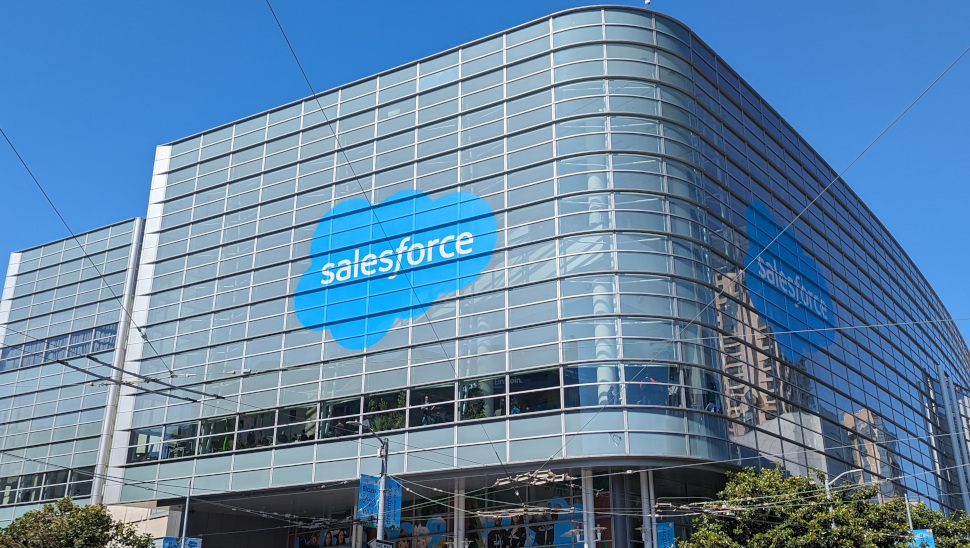
Although today’s businesses may be focused on finding the best CRM software for their current needs, it shouldn’t blind them to the fact that whichever solution they choose is the result of decades of development. Even if their particular platform of choice is a relatively modern one, CRM can trace its roots back to at least the 1950s, when the best CRM for startups, the best CRM for small businesses, and the best sales CRM showcased their various strengths without digital technologies being invented.
That’s right, the earliest examples of customer relationship management didn’t contain email marketing features - and the concept of the best cloud CRM was many years away. Even so, the roots of the CRM tools that many businesses rely on today for project management, productivity, and collaboration benefits can be seen in the rudimentary CRM tools of yesteryear.
Keep reading to find out all about the complete history of CRM and what the tools of today owe to those that have come before.
A brief history of CRM: From the 1950s to the present day
Before we went digital: CRM in the 1950s

Customer relationships have always been fundamental to business success, even before the invention of digital tools. As long as there were customers, businesses could gain a competitive advantage by delivering a better experience than their rivals.
In the early days of CRM, companies had to rely on manual tools like a Rolodex for a rudimentary form of contact management. Customer contact details were written down by hand on cards that were organized in such a way that sales personnel could quickly scroll through and find the customer information that they needed.
Although the Rolodex and similar manual tools were extremely useful, larger businesses could still find managing customer relationships challenging. Once customer numbers become too large, any attempt to organize them manually can quickly become chaotic.
The 1970s: The birth of the digital revolution

In the 1970s, digitalization finally arrived but it didn’t lead to an instant wave of efficiency gains. These were the early days of mainstream computer adoption, so it was only the most forward-thinking companies that began to adopt mainframe computers to digitalize customer information.
Even if a company did decide to jump on board the digital bandwagon, the mainframe computers they deployed were huge (often taking up an entire room) and not especially user-friendly. There was no user interface, no graphic design, and no customer support to speak of with these mainframes. If an employee wanted to get their hands on some newly digitalized customer information, they would have to undergo extensive training first to understand how to access data using the monitor and terminal.
Given that the first instances of digitally storing customer records were rudimentary compared to the CRM platforms around today, it is perhaps unsurprising that many employees decided to stick with accessing customer records manually. However, the introduction of mainframe computers to the office is still a watershed moment - one that paved the way for the modern CRM tools that businesses rely on today.
The rise of database marketing

Later on in the 1980s, Kate and Robert Kestnbaum, as well as Robert Shaw, pioneered database marketing, leading the way for the best database software that we use today to underpin marketing campaigns.
The decision to begin storing customer information in a database proved transformative for marketers, allowing them to sort customers based on individual demands and offer them personalized products and services. This, in turn, unlocked entirely new concepts and methodologies like statistical modeling that opened the door to future data visualization and business intelligence solutions.
The 1990s CRM explosion

This is when CRM platforms as we know them today start to really take off. Many products that combined the functionality of database marketing and contact management began to be deployed by businesses - essentially early forms of the CRM platforms we know today.
In fact, the beginnings of a pre-packaged CRM solution can be traced back to when Tim Siebel founded Siebel Systems in 1993 and began offering sales automation tools. Siebel, who worked at Oracle before deciding to start his own company, was soon competing against other businesses, including the likes of Goldmine and Maximiser, which also started offering their own CRM-esque software to small businesses.
The term CRM had not yet been invented, of course, when many of these products were being offered. That wouldn’t arrive until 1995 when either Siebel, marketer Jagdish N. Sheth, or consultancy Gartner coined the term. However, regardless of who first used the label “CRM,” there’s no denying that the business world would never be the same again - and more change was on the way.
Computers were becoming more widely used - both in the office and at home - meaning that employees could now expect some form of digitalization when managing their customer interactions. The emergence of other tools, such as email, meant that there was a burgeoning tech ecosystem that CRM solutions could tap into and draw data from.
1999: Salesforce hits the scene

A hugely important milestone for CRM solutions came in 1999 when Salesforce was launched. However, the importance of the event wasn’t fully recognized at the time. Few people took notice of this particular CRM, which was based on a very different access and payment model than most others.
Today, Salesforce is a huge name in the business software world generally - not just for its CRM. There’s Salesforce Chatter for communication, Salesforce Marketing Cloud, Salesforce Trailhead for employee training and more. But in 1999, Salesforce was just another tech upstart among many other new players hoping to ride the wave of digitalization to major market share. And CRM wasn’t yet on every company’s radar.
2000s: The cloud and smartphones

One of the reasons why Salesforce’s CRM may have been disregarded (but ultimately one of the reasons it became so successful) is the way that is was delivered to businesses. It was an early example of a SaaS solution, leveraging cloud technology to provide a CRM, instead of an on-premise application.
Although Salesforce was initially marketed at small businesses, it soon began to target larger enterprises that arguably had an even greater need for cloud storage and other functionality given their larger customer bases. They also benefitted from the lower upfront costs and ongoing maintenance provided by the cloud service model.
Other vendors started to wake up to the potential benefits of cloud CRM tools but there was another transformative technology revolution beginning. Mobile CRM was also pioneered by companies such as Siebel Systems with its Siebel Sales Handheld software. This device used the now-discontinued Windows CE operating system to provide some CRM functionality on the smaller screen.
Although at this time, mobile CRM was even more limited than the desktop versions available, it did allow sales personnel to access customer information when away from their desks. While the widespread hybrid work trend we’ve seen recently would be many years off, the emergence of mobile CRM tools prefigured the modern nature of sales and marketing. There was a genuine competitive advantage in being able to meet customer needs when outside the office.
Open-source CRM emerges

With a multitude of CRM vendors competing for market share, a novel idea emerged in the mid-noughties. What if software was made available for free, maintained by a community of like-minded innovators? The CRM wouldn’t be looking to generate profits - just improve the lives of employees and customers. The age of open-source CRM had arrived.
The first open-souce CRM was released in 2004 when Clint Oram, John Roberts, and Jacob Taylor launched their Sugar Open Source CRM project. Today, the open-source version of SugarCRM has been discontinued, but the product lives on in as a paid-for version. Even so, there are many other CRM tools that have remained true to their open-source ethos.
While users might find that some open-source CRMs are lacking in the more advanced functionality you get with subscription packages (they are free, after all), there remains plenty of reasons to consider open-source platforms. The emergence of the open-source software trend, more generally, has shown that good business solutions don’t have to be profit-driven.
Some of the most valued features of modern CRM tools, including lead tracking, sales management, and automation can be found within open-source solutions - and you may even prefer the added flexibility that you get as a result of the CRM code being made freely available online. That isn’t to say that prorpreitary software isn’t often more slick or polished but there’s a reason why open-cource CRMs are still around today, 20 years after the first such solutions was released.
Social CRM

As social networks began to take the world by storm in the early 2000s, organizations started to realize that these platforms weren’t just useful for staying in touch with friends and family - they could have genuine business importance too - especially in terms of customer relationships.
However, in order to make the most of the communication and engagement benefits that social networks offered, businesses has to adopt additional solutions to make sense of the often-unorded information present. Socal media management tools helped, of course, but so did the way that CRM platforms began to incorporate social media data.
Social media became recognized as an essential channel for customer relationships - as important as telephone, email or any other engagement tool. Today, the best social CRMs offer post scheduling functionality and robust integrations with the likes of Facebook, Instagram, LinkedIn, Twitter, and YouTube. In fact, many of the highest-rated CRMs today, including Zoho and HubSpot are lauded for their social media features.
Today, businesses are well aware that they are just as likely (perhaps more likely) to receive a customer request or complaint via social media. And analyzing social network data can help businesses identify leads and track emerging market trends. Social networks may still be useful for sharing those heavily filtered holiday snaps, but there importance to businesses - and CRM platforms - shouldn’t be discounted.
CRMs become must-haves

As we get closer to the present-day, CRMs have become increasingly essential to business success. While these solutions may have once been viewed as simply nice to have, they have developed in such a way that they are now rightly viewed as being absolutely critical to modern customer engagement.
This has led to increasing competition between vendors, with various niches appearing in the CRM market that help software providers stand out from one another. There are sales CRMs, insurance CRMs and many other sector-specific applications. Overall, however, the market is in rude health, with the CRM market size estimated at more than $70 billion.
The explosion in CRM tools available means that businesses are spoilt for choice - but this also makes deciding on which solution to go with more difficult. The importance of buyer guides and reviews has only grown as the number of different CRM tools vying for your attention (and cash) has skyrocketed. Be sure to evaluate the functionality and support that CRM solutions offer carefully and if you’re still unsure, consider whether a free trial could help clear things up, letting you try a solution before committing yourself financially.
What’s next for CRM?

It’s difficult to say exactly what the next development for the CRM market will be, but one thing is certain: continued evolution is coming. Since CRM platforms started to emerge decades ago, they have shown a willingness to adapt and meet the changing needs of businesses and customers alike - whether that was through cloud computing, mobile functionality, or social media.
Some CRM tools have already shown an eagerness to incorporate AI tools and that is likely to be seen across the board as artificial intelligence grows in importance. That could represent the next major development for CRM tools but the market has shown that it’s difficult to predict the next big thing in the world of CRM. For businesses, it’s a case of watching this space.







